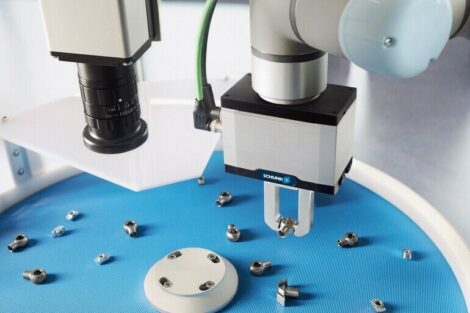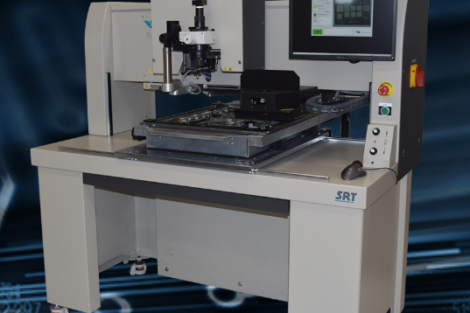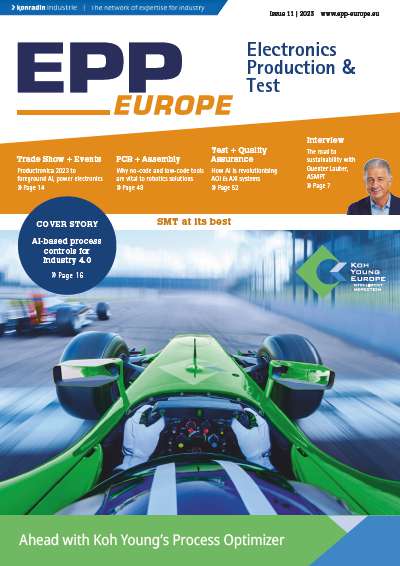The British National Physical Labora-tory (NPL) has produced a code of practice that covers the issues associated with the use of components under the more stringent requirements of a lead-free process. With the widening need to implement a lead-free process, there has been much discussion and speculation on the stability and survivability of components and board assemblies at the higher lead-free soldering temperatures.
The code of practice concludes that there are only minor effects, with the majority of components remaining within specification. However, there are concerns with capacitors, laminates with low glass-transition temperatures, and moisture ingression susceptibility with large plastic bodied semiconductor packages and multilayer PCBs. Misalignment issues with ultra-fine pitch QFPs after lead-free soldering are also highlighted. The report details measurements taken and the approach to be adopted in qualifying parts to the higher temperatures in lead-free processing.
Conclusions of the investigations
Manufacturers of components sup-ply goods that are compliant with lead-free soldering temperatures, although currently many do not specify that they will withstand typical high-temperature profiles. It is therefore essential for the user to review the suitability of any components and laminates being considered for inclusion within a lead-free assembly. Little work has been undertaken to assess the long-term electrical reliability of devices after being subjected to lead-free profiles, but this code of practice does indicate that a significant proportion of existing components are likely to initially survive the increased reflow temperatures. Indeed, some users have been using high-temp solders to manufacture assemblies for a number of years and few reports of reliability issues have arisen. However, some materials do have limitations in their use. The significant conclusions of this report are:
- Components are generally robust and compliant with lead-free processing, thus allaying some earlier concerns over component stability.
- Some components do exhibit significant damage because of the lead-free processing and give cause for concern, i.e. both polyester and electrolytic capacitors. This poor performance is attributed in part to their wound and laminated construction. Although the capacitance will remain within quoted tolerance levels, the loss tangent for these capacitors can degrade to values well outside the tolerance levels.
- Care should be taken not to darken LED-casing materials due to overheating, which would reduce light emission levels.
- Examples of problems with misalignment of ultra-fine pitch QFP after lead-free soldering which do not occur with conventional SnPb.
- Studies have shown that temperature differentials across boards can be as much as 50K. For large boards with a mixture of large and small components, or for those using smaller reflow ovens, overheating of components may be more likely, and correct temperature profiling will be critical.
- The increased temperatures associated with lead-free soldering have little or no effect on dimensional stability or surface insulation resistance of laminate.
- The higher glass-transition temperature (Tg) laminates exhibit better resistance to bend at higher temperatures.
- Low Tg laminates used in lead-free technology may become warped. Such might arise from a variety of circumstances including uneven multilayer build, reflow of a heavily populated assembly when supported only in the four corners of the substrate, or reflow of a heavily populated assembly using an edge conveyor without additional central supports.
- Components and PCBs that are susceptible to moisture ingression and subsequent delamination are likely to have increased susceptibility, due to the higher reflow temperatures and possible faster heating rates. Care should be taken to protect components and PCBs by ensuring that they are delivered in suitable packing (shrink-wrap is generally insufficient), and that they should remain in this protective packing until immediately before the assembly.
- The solderability of the PCB pads is largely independent of laminate material, but will be dramatically influenced by subsequent heating cycles. The increased ageing associated with the higher lead-free temperatures (compared with SnPb profiling) will cause a significant reduction in solderability of all laminates types. If standard immersion gold finishes are used for lead-free assembly (where multiple profiling will occur, e.g. with double-sided soldering), then lower yields can be expected on the second-side reflow compared with those currently achieved with SnPb double-sided soldering.
The expected lower soldering yield for lead-free technology suggest that fluxes that are more aggressive or the use of nitrogen inerting might have to be used to maintain a high yield from this step. (The report No is MATC (A) 141)
EPP EUROPE 406
Share:









